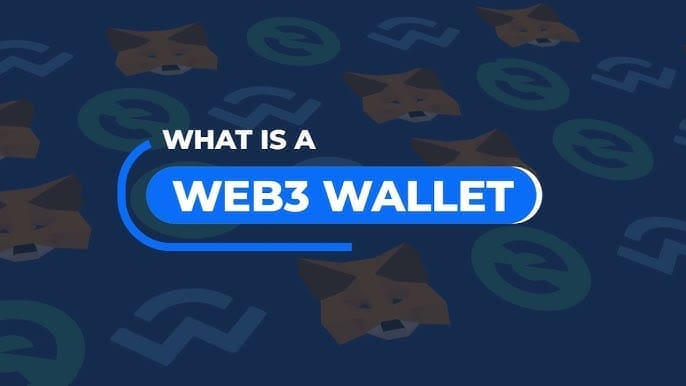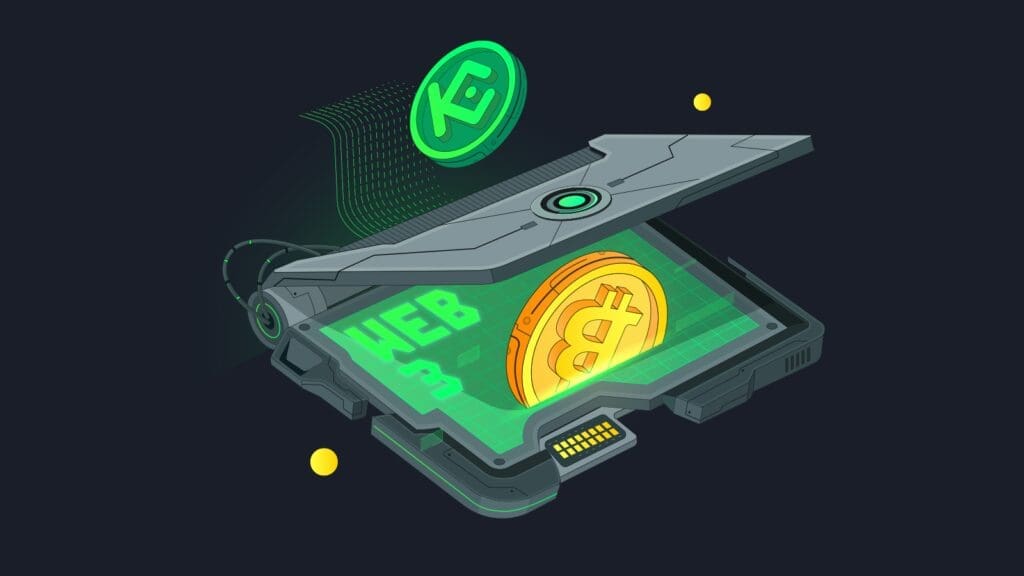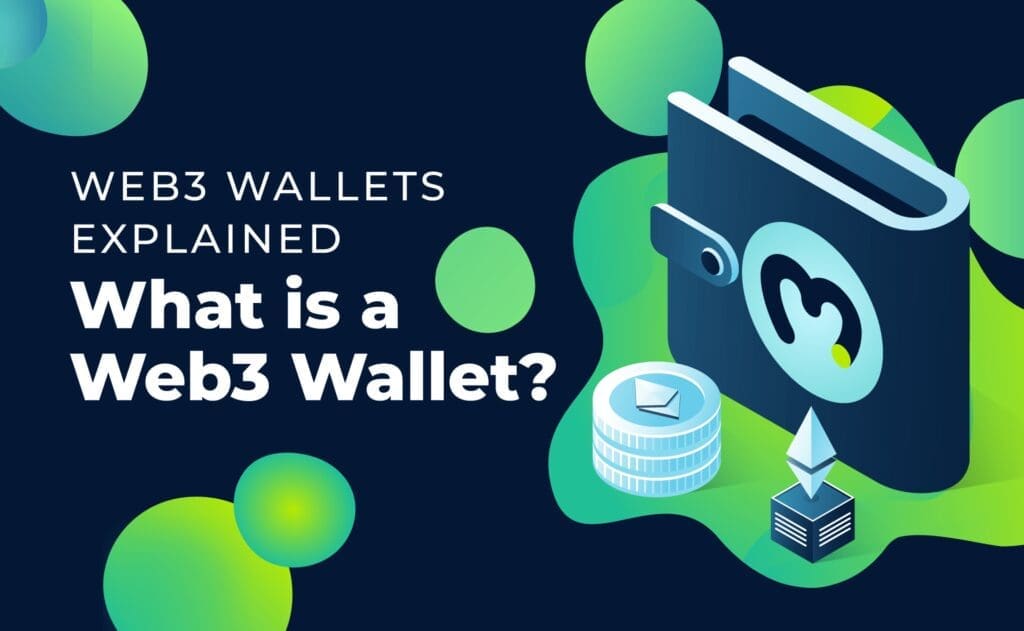
What is a Web3 Wallet? What does it do?
A Web3 wallet is a universal crypto wallet that can be used across various platforms, including mobile apps, desktop versions, and plugins. It enables users to access DeFi applications, which are part of a new generation of financial systems.
Since DeFi operates through software running on the blockchain, it has eliminated the need for third parties in transactions made via Web3 wallets. In this context, a Web3 wallet allows users to control their crypto assets, store digital assets securely, and interact with other cryptocurrencies.
WHAT IS WEB3 WALLET?

Web 0.1 and Web 0.2 refer to early technologies and eras that have significantly shaped the history of the internet. In contrast, Web3 represents a new era that leverages DeFi, a next-generation financial system.
While visions of Web3 vary, it is fundamentally based on cryptocurrencies, NFTs, and blockchain technologies. It also revolves around the concept of decentralized autonomous organizations (DAOs), allowing users to conduct transactions without interference from banks or governments.
Users of Web3 wallets have the ability to manage and interact with their cryptocurrencies. These wallets offer features such as secure storage of digital assets, money transfers, and value transactions. Additionally, users can sign smart contracts and access various other Web3 applications beyond the wallet.
Although Web3 innovation began to gain traction between 2020 and 2021, the popularity of digital wallets surged in the latter part of 2021. Today, the Binance Web3 wallet stands out as one of the most widely used platforms.
WHAT ARE THE KEY FEATURES OF WEB3 WALLETS?

Web wallets have become crucial tools for transactions on the blockchain network. Their key features include:
- Peer-to-Peer Transactions: Web3 wallets enable users to transfer funds directly from one wallet to another on the blockchain network, bypassing banks or other payment platforms.
- Multi-Asset Management: A Web3 wallet supports various blockchain networks and applications, allowing users to manage multiple digital assets, including NFTs and cryptocurrencies, from a single interface.
- Security: Security is paramount in the cryptocurrency world. Web3 wallets employ advanced encryption techniques to protect private keys from unauthorized access.
- Interoperability: Web3 wallets can interact with other Web3 applications, enabling users to engage with decentralized exchanges, marketplaces, and other blockchain-based platforms.
- Privacy: Web3 wallets ensure that users’ personal information is not shared with third-party providers, giving individuals greater control over their data and digital assets.
In addition, Web3 wallets are considered a gateway to the decentralized web.
HOW DOES A WEB3 WALLET WORK?

A Web3 wallet is a digital tool designed for managing cryptocurrency assets and interacting with blockchain-based services. While each wallet may offer different features, they share a fundamental function. Users start by creating an account and obtaining a private key, which must be recorded and stored offline in a secure location.
Once logged in, users can easily view their digital assets, send them to other addresses, or receive them. Additionally, Web3 wallets enable more straightforward acquisition of crypto assets by connecting directly to blockchain or trading platforms.
A Web3 wallet emphasizes self-custody, allowing users to maintain control over their digital assets with minimal restrictions. Although some platforms may impose certain limitations, Web3 wallets empower users to execute irreversible transactions according to their preferences.
WHAT DOES A WEB3 WALLET DO?

A Web3 wallet is designed to manage digital assets and provide access to blockchain-based services. It enables users to connect to decentralized applications (dApps) and sign transactions. By using a Web3 wallet, individuals can perform actions such as proving ownership of specific tokens, sharing aspects of their identity, and transferring funds. Essentially, it functions as a combination of a user account and a bank account.
For any transaction to occur, a Web3 wallet must confirm it, allowing users full control over their accounts. The wallet tracks interactions with decentralized applications, enabling users to monitor every DeFi interaction, token transfer, and NFT certificate received from blockchain-based platforms.
In the Web3 ecosystem, a user’s wallet is considered their identity. Instead of creating a new account for each online service, users can utilize their Web3 wallet. It also serves as a key place to view the user’s reputation and contributions to the blockchain network.
There are numerous Web3 wallets available, each offering different features. Some allow users to purchase cryptocurrencies directly. Typically, these wallets provide a customized user interface tailored to the decentralized applications they support. They often highlight the collection of assets they offer and enable users to trade directly from within the wallet, without needing to use a separate exchange.
WHAT ARE THE BENEFITS OF USING A WEB3 WALLET?

Choosing the right Web3 wallet depends on the type of digital assets a user plans to store. Bitcoin wallets are particularly essential for managing NFTs and are often preferred over wallets for cryptocurrencies like Ethereum, Tether, or Dogecoin. They are also ideal for those seeking stability, especially during price fluctuations of Ethereum and Bitcoin.
Key features of Web3 wallets include:
- Low Learning Curve and User-Friendly Interface: Web3 wallets offer straightforward setup processes. Users can easily perform trading and storage operations even with minimal technical knowledge.
- Community Support: Most Web3 wallet providers have robust communities that offer support and resources. Users can find answers through online videos and forums, making it easier to navigate the Web3 ecosystem.
- Financial Control: Users can send and receive crypto assets without the constraints of centralized institutions, allowing complete control over their portfolios.
- Anonymity: Transactions maintain user anonymity. Only the wallet address is needed to send assets, eliminating the need for personal information and enhancing privacy.
In addition to these features, Web3 wallets prioritize security. They safeguard users’ crypto assets with private keys required for access, preventing unauthorized access by hackers. Well-designed software wallets provide efficient and secure storage, while those offered by reputable exchanges offer industrial-grade security.
THE FUTURE OF THE WEB3 WALLET

The demands of users within the Web3 ecosystem continue to grow and diversify, signaling that Web3 wallets will evolve accordingly. These wallets have already enabled users to fully leverage blockchain technology, manage digital assets, and engage with the decentralized web. However, several integrations and advancements are anticipated in the coming years.
By 2024 and beyond, we can expect to see developments such as:
- Advanced NFT Governance: Enhanced mechanisms for managing and governing NFTs, providing users with greater control and flexibility.
- Cross-Chain Compatibility: Improved interoperability allowing users to seamlessly interact with multiple blockchain networks.
- Enhanced Security Features: Innovations aimed at bolstering the security of Web3 wallets to protect assets and user data.
- DeFi Integration: More sophisticated integration with decentralized finance applications, expanding the range of financial activities accessible through Web3 wallets.
- Educational Resources: Increased availability of resources to help users better understand and navigate the Web3 ecosystem.
Additionally, the integration of Web3 wallets with traditional financial services may accelerate. In the near future, users could have the opportunity to invest, lend money, and access other banking services directly from their Web3 wallets.
TYPES OF WEB3 WALLETS

There are three main types of Web3 wallets: custodial, non-custodial, and smart contract. Each type has distinct characteristics and use cases, detailed below.
Non-Custodial Wallets
Non-custodial wallets provide users with full control over their assets. The public key is used to receive cryptocurrency or other digital assets, while the private key, a complex and secret number, is used to sign transactions on the blockchain. Only the owner of the private key can access and manage the assets.
An analogy for a public key is a home address: it can be known and shared openly. However, the private key is like a house key, kept secret and secure. Losing access to the private key means losing control over the assets.
These wallets are available as mobile apps or browser extensions and are categorized as “hot wallets” due to their internet connectivity. They can also be stored on physical devices.
Custodial Wallets
Custodial wallets are managed by a third party, such as a cryptocurrency exchange. In this arrangement, the third party holds the private key, which requires users to trust them with their assets. Custodial wallets often offer features such as account recovery, similar to email providers, but this involves entrusting the third party with access to your assets. These wallets can also interact with smart contracts.
Smart Contract Wallets
Smart contract wallets are governed by a smart contract on a blockchain network. These wallets can be controlled by logic that requires multiple signatures, enhancing security through redundancy. They are recoverable and can be customized with various security protocols. Smart contract wallets also support batch transactions, making them ideal for individual users, businesses, and organizations involved in trading.
Each type of Web3 wallet offers unique advantages, catering to different needs and preferences in managing digital assets.
WHAT TO CONSIDER WHEN USING A WEB3 WALLET?

Web3 wallets enable the storage and trading of digital assets, but they must be used responsibly to avoid risks such as asset loss. For those seeking full control over their assets and ensuring the security of their wallet-specific keys and passwords, attention to the following aspects is crucial:
- Private Keys and Mnemonic Phrases: Always record and securely store your private keys and mnemonic phrases. Losing them results in the permanent loss of control over your assets.
- Strong Passwords: Use a strong, unique password for your wallet and keep it secure. If forgotten or lost, recovery may be impossible.
- Phishing and Fraud Prevention: Be vigilant against phishing attacks and transaction fraud. Always verify the authenticity of links and software before engaging with them.
- Legal and Security Measures: Report any illegal activities and be cautious when interacting with new software or clicking on unfamiliar links to prevent unauthorized access to your assets.
With these precautions, Web3 users can trade cryptocurrencies securely, regardless of location and time.
You may also like this content
- Thailand May Accept Bitcoin as a Payment Method
- Russia Announces Six-Year Ban on Cryptocurrency Mining to Alleviate Energy Pressure
- Cryptocurrency Thefts Surge by 40% in 2024, Reaching $2.3 Billion
Follow us on TWITTER (X) and be instantly informed about the latest developments…










